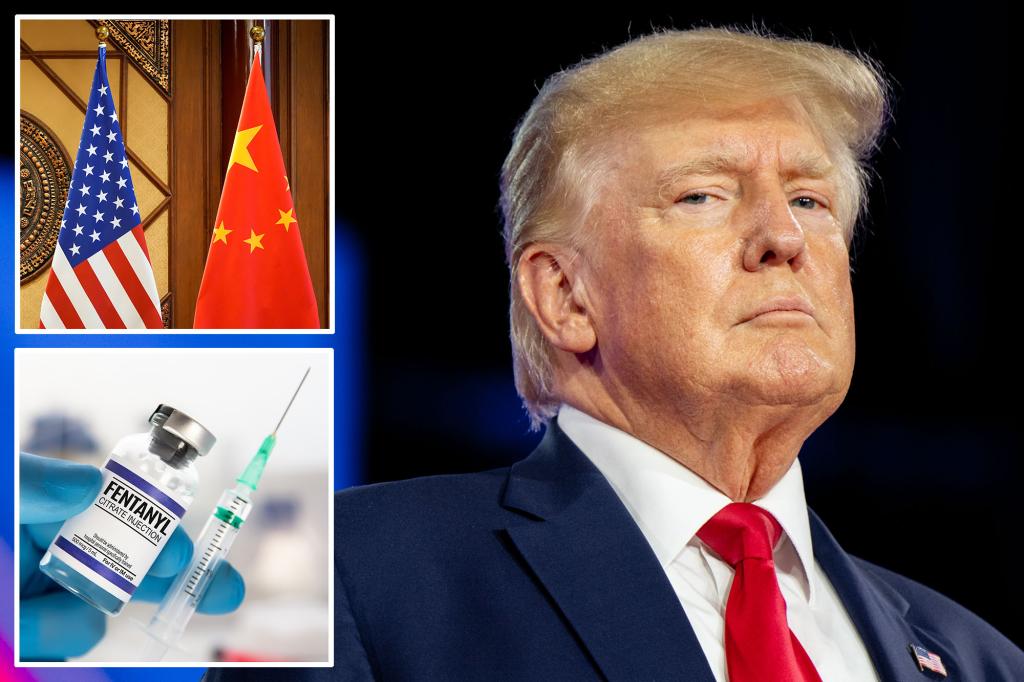The imposition of a 10% tariff on Chinese imports by the Trump administration marked a significant escalation in trade tensions between the United States and China. China responded by denouncing the tariffs as a violation of international trade rules and vowed to challenge the measures at the World Trade Organization (WTO). While Beijing also pledged to implement “countermeasures,” the response was notably more restrained than previous reactions to trade disputes, signaling a potential shift in China’s approach. This suggested a desire to avoid a full-blown trade war, echoing recent official statements emphasizing the detrimental nature of escalating trade conflicts. The focus on dialogue and cooperation hinted at a willingness to find a negotiated solution rather than retaliatory measures.
The Trump administration justified the tariffs by accusing China of failing to adequately control the flow of fentanyl, a powerful opioid, into the United States. This rationale linked the trade dispute to a public health crisis, further complicating the already strained bilateral relationship. China, however, rejected this accusation, asserting that fentanyl is an “American problem” and highlighting its cooperation with the U.S. in combating narcotics trafficking. This divergence in perspectives underscored the underlying mistrust and differing priorities between the two nations, making a swift resolution to the trade dispute appear less likely. The Trump administration’s simultaneous imposition of tariffs on Canada and Mexico further broadened the trade conflict, indicating a more aggressive, multilateral approach to trade policy.
China’s decision to appeal to the WTO, while largely symbolic, represented a commitment to utilizing established international trade mechanisms to address its grievances. This contrasted with more immediate and direct retaliatory measures taken in previous trade disputes, signaling a more calculated and potentially less disruptive response. China’s past experience with WTO challenges against tariffs imposed by the European Union suggests that this avenue may not provide immediate relief but serves to underscore China’s commitment to multilateral trade rules and dispute resolution mechanisms. The measured language used in official Chinese statements emphasized the importance of dialogue and cooperation, signaling a preference for a negotiated settlement rather than a tit-for-tat escalation.
The dispute over fentanyl became a focal point of the escalating trade tensions. The Trump administration’s claim that China was not doing enough to stem the flow of fentanyl precursors into the U.S. added a new dimension to the trade war, intertwining economic issues with public health concerns. China’s rebuttal, asserting its commitment to anti-narcotics cooperation and placing the onus of responsibility for the fentanyl crisis on the U.S., further highlighted the differing narratives and the difficulty in finding common ground. This disagreement on the fentanyl issue added another layer of complexity to the already strained U.S.-China relationship, making a mutually acceptable resolution more challenging.
The context of the Trump administration’s action is crucial to understanding the dynamics at play. Trump’s history of employing aggressive trade tactics, coupled with his focus on addressing the opioid crisis, contributed to his decision to impose tariffs on China. This decision, however, risked exacerbating the already complex relationship between the two economic superpowers. China’s response, while firm in its denouncement of the tariffs, also reflected a degree of caution, possibly motivated by a desire to avoid a full-blown trade war that could negatively impact both economies. This cautious approach may have also been influenced by the ongoing COVID-19 pandemic and its global economic repercussions, making stability and predictability in international trade even more critical.
The trade dispute highlighted the broader geopolitical tensions between the United States and China. The two nations were already locked in a competition for global influence, with disagreements on issues ranging from trade and technology to human rights and regional security. The tariff dispute added another layer of complexity to this already strained relationship, further increasing the risk of miscalculation and escalation. The differing narratives surrounding the fentanyl issue, as well as the broader context of geopolitical competition, underscored the challenges in finding a sustainable and mutually beneficial resolution. The potential for miscommunication and unintended consequences remained high, highlighting the need for ongoing dialogue and diplomatic efforts to manage the increasingly complex relationship between the two global powers.

